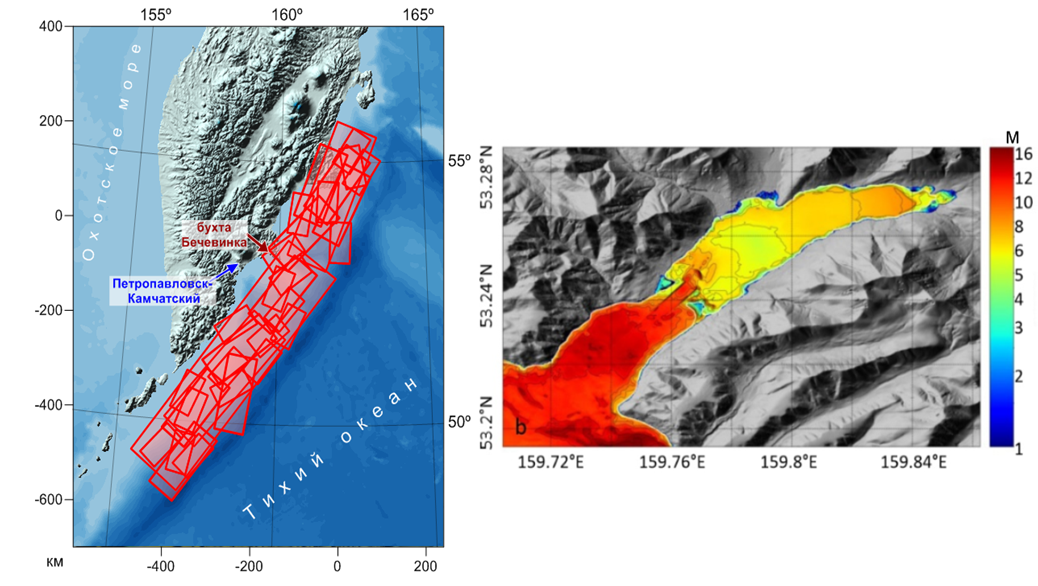The article “Technique of local probabilistic tsunami zonation for near field seismic sources applied to the Bechevinskaya Cove (the Kamchatka Peninsula)”, co-author is A.V. Lander, was published in the journal Natural Hazard (Q2 WoS).
The study was carried out by the staff of IEPT RAS (synthetic catalog of earthquakes), ICT SB RAS (calculation of the heights of tsunamis), IVS FEB RAS (field observations).
In this paper, a detailed probabilistic model of seismicity in the East of Kamchatka has been built. The model is constructed in the form of a synthetic catalog (fig.1), the statistical properties of which correspond to real observations over the past 120 years. The simulated parameters of the catalog are three-dimensional spatial position of the earthquake, their sizes, mechanisms and magnitude repeatability. The details of the technique are presented. Threshold heights of tsunami waves from model earthquakes (fig.2) are calculated and their probabilities are estimated. The result is represented as a series of maps of possible (threshold) tsunami amplitudes for the water and coast area of the Bechevinskaya Cove. The maps correspond to a set of time periods and probabilities of exceeding of tsunami thresholds.
In the east of Kamchatka, in the Bechevinskaya Cove, an intermediate point is being built for the future transshipment of liquefied natural gas transported along the Northern Sea Route to large gas tankers delivering it to Southeast Asia.

Source: L.B.Chubarov, V.A.Kikhtenko, A.V.Lander, O.I.Gusev, S.A.Beisel, T.K.Pinegina Technique of local probabilistic tsunami zonation for near field seismic sources applied to the Bechevinskaya Cove (the Kamchatka Peninsula) // Natural Hazards. 2021. DOI:10.1007/s11069-021-04951-y.

